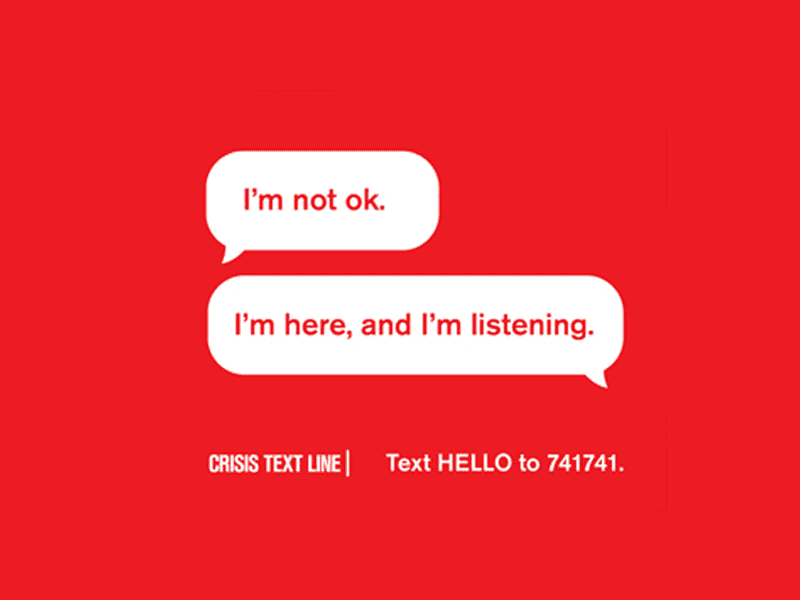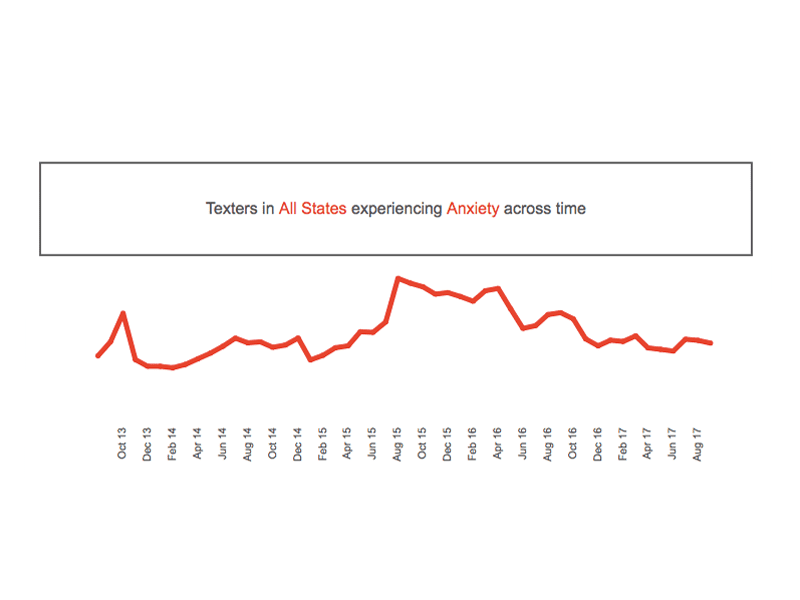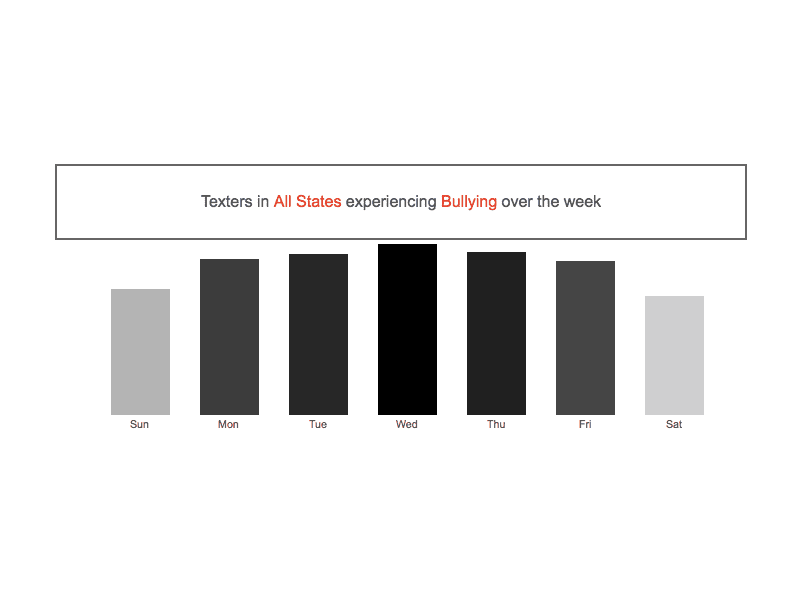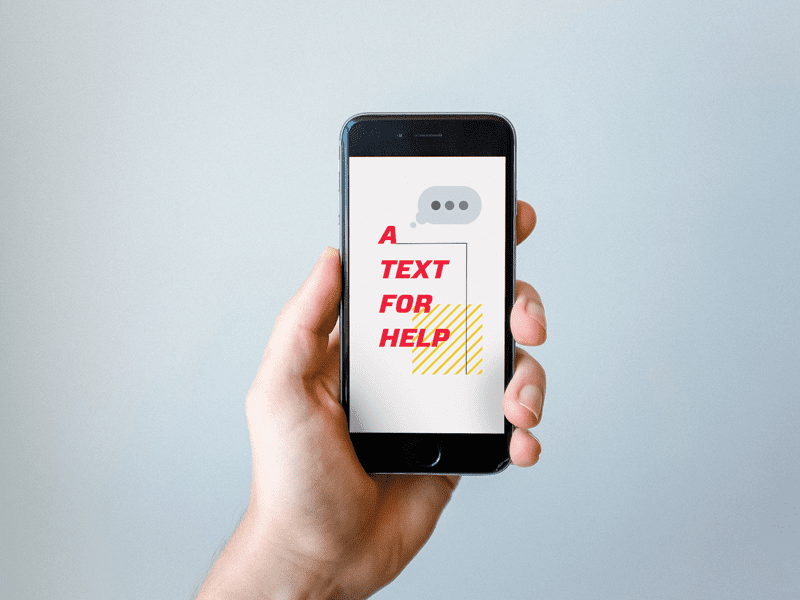Crisis Text Line engages with texters in moments of crisis and compiles data on the anonymous raw language texters use to teach us when crises are likely to happen and help to prepare for them.
Founded in 2013 by Nancy Lublin, CEO of DoSomething.org, Crisis Text Line is a free, 24/7 text-in support service. Since its inception, Crisis Text Line has exchanged more than 55 million messages with people in crisis.
Shinise Muse, Crisis Counselor Supervisor, and Bob Filbin, Chief Data Scientist, recently shared more about the barrier-breaking service with Caring.
How did Crisis Text Line get started?
SM: We launched quietly in Chicago and El Paso, Texas, in August 2013. Within four months we were receiving texts from all 295 area codes across the country. Our growth has been largely organic. We’re simply offering people a service that people need. And, we’re doing so in a way that’s familiar (over text!) and human (through our trained volunteer Crisis Counselors).
What is the benefit of having a text line as opposed to a phone line?
SM: Texting is the preferred method of communication for young people. Further, there are many people with social anxieties/phobias, mental illnesses, language barriers, speech impediments or those who are deaf or hard of hearing. Texting allows a person in crisis to use a confidential and discreet means to work with a trained counselor from anywhere in the U.S. Imagine what this means for someone reaching out from the same home as their abuser.

How do you train counselors to respond to people in crisis?
SM: After completing an application and background check, each Crisis Counselor is assigned a coach who guides them through professionally designed and proven material over the course of 36 hours. Each counselor must pass several tests and a final assessment before taking their first conversation and officially becoming a Crisis Counselor. All training is done remotely from a personal computer.
How are you able to measure the impact of the Crisis Text Line?
BF: Texters reach out to us in their moments of greatest need; our goal in every conversation is to move the texter from hot to cool. We see our impact in three ways: (1) texter perception, (2) conversation sentiment, and (3) our organic growth. (1) At the end of every conversation, we ask our texters if they found the conversation helpful; 86 percent say yes. That’s pretty amazing, for texters who are in some of the most difficult moments in their lives. (2) We automatically scan conversations for words of gratitude and positive sentiments. We track these and share them with our Crisis Counselors; nothing feels better than knowing you made a difference. (3) After four years, we are still not spending money on marketing.

You have access to a lot of data in the form of more than 55 million messages. At what point did you begin to collect and analyze the data and how do you use it?
BF: Crisis Text Line was built from the ground up around data and tech. Our first two employees were a Chief Data Scientist and Chief Technology Officer. Being tech- and data-first is incredibly rare for nonprofits, but it has been instrumental in keeping up with demand and continuously creating a stronger service through insights in our data. At a high level, we use data in two ways: internally, to improve the quality of our service and externally, to improve the crisis space as a whole.
Internally, we use insights to improve our training, like the three most effective words to share with a texter are “Brave, Smart, and Proud.” For example, “You are so brave to text in today and share what you’re feeling.” Externally, we share data with the public at crisistrends.org, with partners such as the National Eating Disorder Association and the State of Montana, and with researchers through our Closed Research program. Ultimately, our open data program aims to influence research, policy, and community efforts based on data.
How does that information help improve outcomes for users?
BF: Besides improving our training, we also support texters by building algorithms that increase efficiency and effectiveness. One example is our texter triage tool: traditionally, crisis lines have responded to people in the order in which they arrive. However, Crisis Text Line acts more like a hospital emergency room. Just like an emergency room prioritizes a person with a bullet wound over a person with a broken leg, we want to prioritize texters experiencing imminent risk of a suicide attempt. Based on a texter’s first three messages, we are able to accurately identify over 80 percent of texters experiencing suicidal ideation; these texters are labeled “code orange” and moved to No. 1 in the queue. This matters most when we see a huge spike in volume. For example, last November, in the two days after the election, we saw a fourfold increase in volume. Despite the high volume, our code orange algorithm allowed us to respond to high-risk texters in an average of 39 seconds.

How can the data be used in other settings such as schools, mental health centers and families?
BF: Traditionally, data on crisis is collected by organizations like the Centers for Disease Control and Prevention and the National Institutes of Health in large-scale surveys, which mostly happen once a year. Our dataset is unique in two ways: we are engaging with texters in their moments of crisis and we see the raw language texters use to describe their feelings of crisis. So, instead of checking a box saying, “I felt suicidal in the last year,” we can see, are rates of suicidal ideation higher in the summer or school year, or during the day or night? We share these insights so community organizations can make resources available when people need them most.
[button color=”black” size=”normal” alignment=”none” rel=”nofollow” openin=”newwindow” url=”crisistrends.org”]Explore the data at crisistrends.org.[/button]











